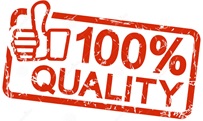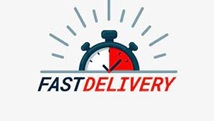- Premium Academic Help From Professionals
- +1 323 471 4575
- support@collegepaper.us
Ethical Code in Your Workplace Discussion
Ethical Code in Your Workplace Discussion
| Order ID:89JHGSJE83839 | Style:APA/MLA/Harvard/Chicago | Pages:5-10 |
Instructions:
Ethical Code in Your Workplace Discussion
I’m working on a business multi-part question and need an explanation and answer to help me learn.
Every business organization, no matter the size, industry, or scope, benefits from having a set of guiding principles governing its conduct (Ethical Code). Ethical business professionals are, by and large, trustworthy, fair, impartial, respectful of others, and concerned about the impact of their actions on co-workers and their company.
Please share, in detail, the ethical code in your workplace and the effect it has on the mission and overall perception of your organization by employees as well as clients.
SNHU Business Organizational Discussion
Read the articles and find a current event about an organizational change effort. Create a two-paragraph synopsis to explain that change effort to your classmates, post a link to the current event article, and make sure to answer the following questions:
What were the primary drivers of the change effort? Why were these drivers critical? Who was “feeling the pain” of those issues not being addressed effectively?
What was the gap (or gaps) between the current situation and the targeted goal of the change effort?
Read the posts of your classmates and comment on their assessment of the current event. Do you agree with their analysis? Did you find something else about the organizational change effort that you can add to the conversation?
Reply #1Brenna Gonsalves posted Jun 29, 2022 7:01 PMSubscribeHello class,For this week’s discussion post, I chose an article close to home. The Boston Globe published “With upcoming leadership transition, what’s next in the effort to diversify the Boston Fire Department?” by Danny McDonald on June 25th, 2022.
In it, McDonald (2022) details the on-going pressures from the city to diversity the BFD and the problems that led to this necessity. It is important to mention that the Boston Fire Department (BFD) is described as “a notoriously change-resistant institution,” (McDonald, 2022, n.p.). However, due to the upcoming retirement of the current commissioner, the BFD is being pushed to diversify their organization.
Although this change has yet to come to fruition, it is worth examining.Of the almost 1,600 workers in the Boston Fire Department 72% are white and 94% are male (McDonald, 2022). Concerns surrounding diversity and equality in the BFD have been long-standing. Almost 10 years ago a report was commissioned that deemed the department “technically proficient but a bastion of longtime sexism and racial discrimination,” (McDonald, 2022, n.p.). Then, in 2019 the city commissioned another report after an independent “review of the department’s handling of harassment and discrimination allegations brought by women on the force,” (McDonald, 2022, n.p.) which confirmed that the BFD is change resistant with a male-dominated culture. Then again in 2020, after a male firefighter was found guilty of assaulting a female coworker, additional light was shed on the hostile work environment the (already limited number of) female firefighters endure (McDonald, 2022).
Although no replacement for the commissioner has been named yet, the goal of the mayor is clear “‘Partnering alongside our incoming fire commissioner, we will work to break down barriers to enhance opportunities for women and people of color to join our fire department,’” (McDonald, 2022, n.p.). With this vision in mind, the Boston Fire Department is set to experience a substantial change effort to overhaul their current organizational culture, starting with the new fire commissioner.
In this change effort, external drivers are the primary instigators of this change. Political and societal pressures are being put on the mayor and other city officials to push for diversity, and to replace the fire commissioner with someone who fits this vision (McDonald, 2022).
Arnoud Franken, Chris Edwards, and Rob Lambert said that “managers must be involved early in the strategic leadership team’s diagnosis of the business environment,” (2009, pg. 54) in the case of the BFD, their business environment is the city of Boston.
In recent years, the BFD has been “repeatedly blasted…for failing to reflect the demographics of the city it serves,” (McDonald, 2022, n.p.) and mayor Michelle Wu now has the ability to select a leader that will be a change agent to this cause.
Karen S. Whelan-Berry and Karen A. Somerville (2010) also studied that, “leadership works as a change driver when leaders actively support the change vision…throughout the change implementation process,” (pg. 183). So long as mayor Wu keeps her word to work with the new fire commissioner and the Boston Fire Department to increase opportunities for women and people of color, both mayor Wu and the fire commissioner would be considered change drivers in their pursuit of diversity (McDonald, 2022; Whelan-Berry & Somerville, 2010).
In this change effort, external drivers are critical because it is clear there are no internal drivers (McDonald, 2022). Female firefighter, Julia Rodriguez, was quoted stating that “‘nobody from within will make any changes,’” (McDonald, 2022, n.p.). Since the current culture in the BFD is deeply fixed, it is going to take multiple external drivers from the city, mayor, and city officials to effect change (McDonald, 2022).
As “it is often said that major change is impossible unless the head of the organization is an active supporter,” (Kotter, 1995, pg. 98) using the external drivers to influence who becomes fire commissioner is a critical first step. Without this change effort, the women and people of color in the department would continue to be marginalized in the predominately white, male culture of the Boston Fire Department.As for the gaps between the current situation and the targeted goal of the change effort, it is clear there are major discrepancies between the number of women and people of color in the BFD and the number in the community of Boston. According to the United Stated Census Bureau (2021), Boston is 52% female and 48% people of color. This is drastically different from the 6% female and 28% people of color that currently makes up the BFD (McDonald, 2022).
For the department to better reflect the city it serves, the Boston Fire Department has a long way to go. To aid in this goal, the organization also must bridge the gap between the current organizational culture and the aimed culture of diversity and acceptance. Having a predominantly white-male culture with and in-group v. out-group mentality that is resistant to change is a major gap from the targeted goal of a diverse culture capable of accepting of differences (McDonald, 2022).
Since this change is on-going, it will be interesting to watch how the city and the mayor work through the steps for organizational change. I look forward to hearing your input. Brenna References Franken, A., Edwards, C., & Lambert, R. (2009). Executing Strategic Change: Understanding the Critical Management Elements That Lead to Success. California Management Review, 51(3), 49–73. https://doi.org/10.2307/41166493Kotter, J. P. (1995). Leading Change: Why Transformation Efforts Fail. Harvard Business Review, 96–103. https://hbr.org/1995/05/leading-change-why-transfo…McDonald, D. (2022, June 25). With upcoming leadership transition, what’s next in the effort to diversify the Boston Fire Department? BostonGlobe.Com. https://www.bostonglobe.com/2022/06/25/metro/with-…United Stated Census Bureau. (2021, July 1). U.S. Census Bureau QuickFacts: Boston city, Massachusetts. Census Bureau QuickFacts. https://www.census.gov/quickfacts/bostoncitymassac…Whelan-Berry, K. S., & Somerville, K. A. (2010). Linking Change Drivers and the Organizational Change Process: A Review and Synthesis. Journal of Change Management, 10(2), 175–193. https://doi.org/10.1080/14697011003795651less
Reply #2Kimberly Kirby posted Jun 28, 2022 8:54 PMSubscribeMy current event is about British Airways and the organizational restructure the company went through to maintain the status they hold as a company in 2022.BA (British Airways) was created in 1974 by merging four airline companies into one: (1) British European Airways, (2) British Overseas Airways Corporation, (3) Northeast Airlines, and (4) Cambrian Airlines. By the late 1980’s the company had developed a reputation for its terrible service – so in 1981, Lord John King was brought on as a new Chairperson. He immediately noticed that British Airways was operating very ineffectively with a huge staff, had massive financial issues, and was wasting valuable resources. (Li, Lori).To increase profits, King decided to restructure the entire organization by reducing its workforce from 59,000 to 39,000 employees, eliminating unprofitable routes, and modernizing the fleet. Over the course of two years, Lord King had replaced over half of the company’s board. He had also repaired the airline’s image by bringing in a new marketing expert and hiring Colin Marshall as the new CEO in 1983. Within 10 years, the airline reported the highest profits in its industry: $284 million. (Li, Lori).Lord King took British Airways from its dire and inefficient, loss-making state to become one of the most successful and profitable airlines in the world. He empowered his people and his organization through a change management framework. King involved the whole organization in his change management plan, from HR to technology, engineering, aircrews, and individuals. By following Kotter’s eight step change management framework, King realized that resolving conflicts and dealing with resistance to change was part of the change management process. (Lock, Daniel).Sean Doyle, the current CEO for British Airways has made some major changes to the Senior Leadership and Management teams. He states: “We’re navigating an extremely challenging period as we rebuild following the global pandemic, and therefore we’ve created four new roles on our leadership team. Everyone at British Airways is completely focused on three priorities: our customers, supporting?the biggest recruitment drive in our history,?and increasing our?operational resilience to deliver the best possible experience for our customers.” This shake up and turnaround of Leadership follows a tumultuous period for British Airways, in which the airline struggled with various operational problems while dealing with the fallout of the COVID-19 pandemic. (Taylor, Chloe).What were the primary drivers of the change effort? Why were these drivers critical? Who was “feeling the pain” of those issues not being addressed effectively?The primary drivers for a needed change started back in 1980 shortly after the four companies merged together. Each prior airline had their own way of doing things and the Employees were accustomed to those ways and change was something they may not have been quite ready for.British Airways was in a critical situation where change was needed. When Lord John King was brought in, he had his work cut out for him; with a large number of staff, many large financial issues and resources not being used in the correct ways to their fullest potential.Everyone who was a part of the British Airways ‘family’ would feel the pain and stress that was happening within the work doors and that pain and frustration was rolling over to the public and the customers. What was the gap (or gaps) between the current situation and the targeted goal of the change effort?The gaps would have been the differences between the four companies merging together and each employee, leadership team, and management teams only knowing how to do things the way they had always been done; no-one was really sure how to go about working as one large team.References:Li, Lori. (2020, June 16). Organizational Change Done Right: Examples from the Giants of the Industry. Tiny Pulse by Limeade. https://www.tinypulse.com/blog/3-examples-of-organizational-change-and-why-they-got-it-right.Lock, Daniel. (2014, August 28). 8 Steps To Create A Change Management Framework. Daniel Lock Consulting. https://daniellock.com/eight-steps-to-create-a-change-management-framework-that-will-fly/.Taylor, Chloe. (2022, May 10). British Airways CEO shakes up executive team as airline struggles to meet surging travel demand. Fortune. https://fortune.com/2022/05/10/british-airways-shakes-up-executive-team/
|
RUBRIC |
||||||
|
Excellent Quality 95-100%
|
Introduction
45-41 points The background and significance of the problem and a clear statement of the research purpose is provided. The search history is mentioned. |
Literature Support 91-84 points The background and significance of the problem and a clear statement of the research purpose is provided. The search history is mentioned. |
Methodology 58-53 points Content is well-organized with headings for each slide and bulleted lists to group related material as needed. Use of font, color, graphics, effects, etc. to enhance readability and presentation content is excellent. Length requirements of 10 slides/pages or less is met. |
|||
|
Average Score 50-85% |
40-38 points More depth/detail for the background and significance is needed, or the research detail is not clear. No search history information is provided. |
83-76 points Review of relevant theoretical literature is evident, but there is little integration of studies into concepts related to problem. Review is partially focused and organized. Supporting and opposing research are included. Summary of information presented is included. Conclusion may not contain a biblical integration. |
52-49 points Content is somewhat organized, but no structure is apparent. The use of font, color, graphics, effects, etc. is occasionally detracting to the presentation content. Length requirements may not be met. |
|||
|
Poor Quality 0-45% |
37-1 points The background and/or significance are missing. No search history information is provided. |
75-1 points Review of relevant theoretical literature is evident, but there is no integration of studies into concepts related to problem. Review is partially focused and organized. Supporting and opposing research are not included in the summary of information presented. Conclusion does not contain a biblical integration. |
48-1 points There is no clear or logical organizational structure. No logical sequence is apparent. The use of font, color, graphics, effects etc. is often detracting to the presentation content. Length requirements may not be met |
|||
 |
 |
|||||
 |
 |
 |
||||
| You Can Also Place the Order at www.collegepaper.us/orders/ordernow or www.crucialessay.com/orders/ordernow
Ethical Code in Your Workplace Discussion |
||||||
Ethical Code in Your Workplace Discussion


